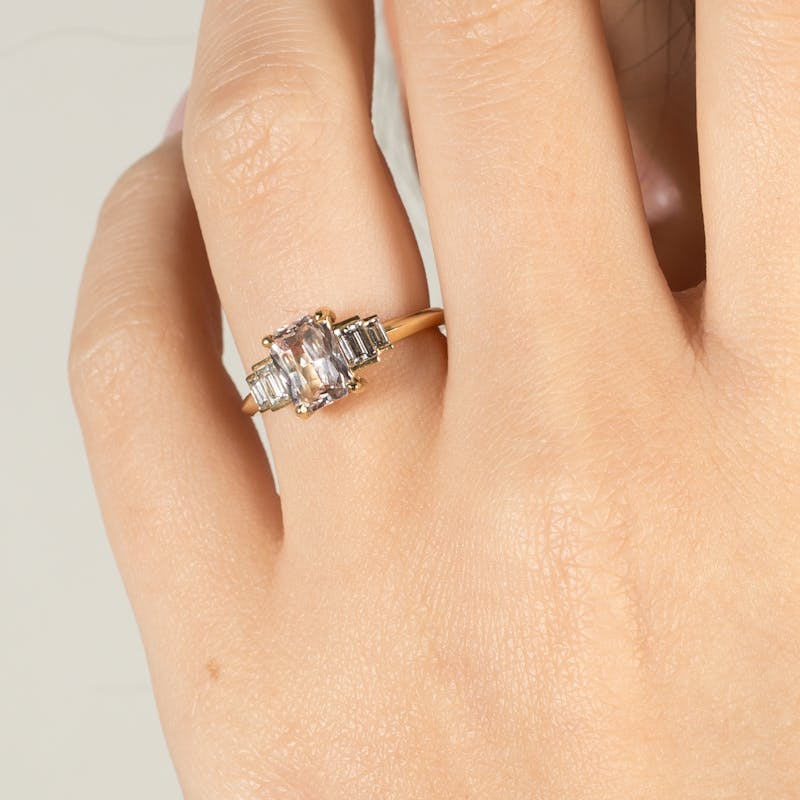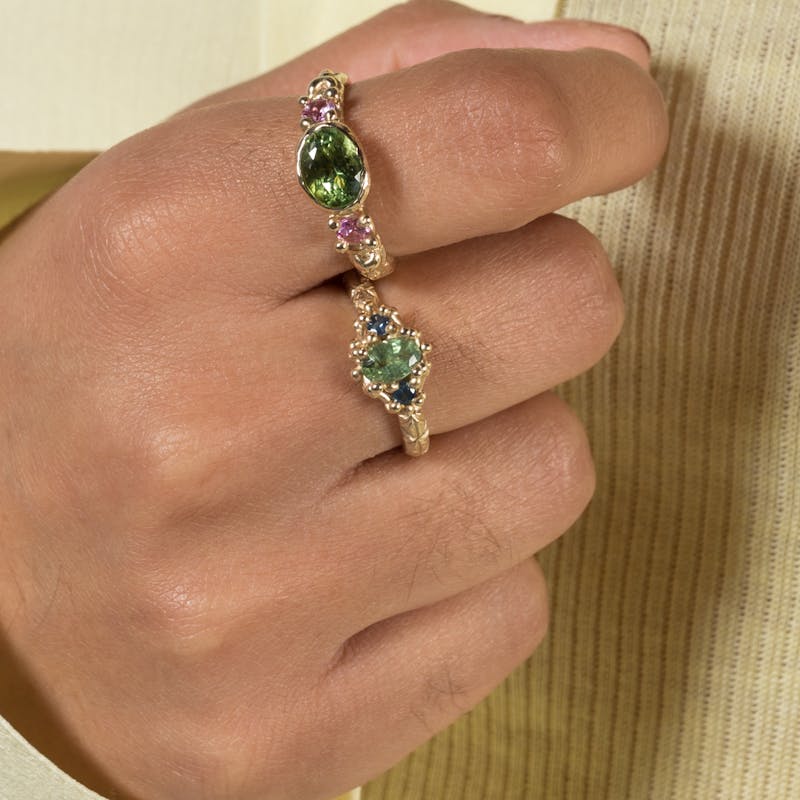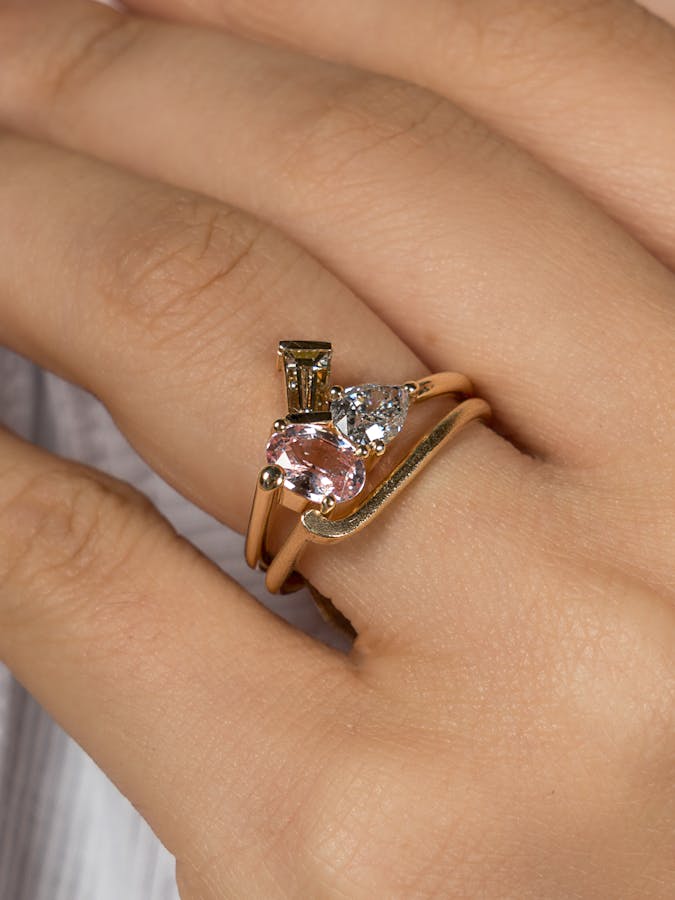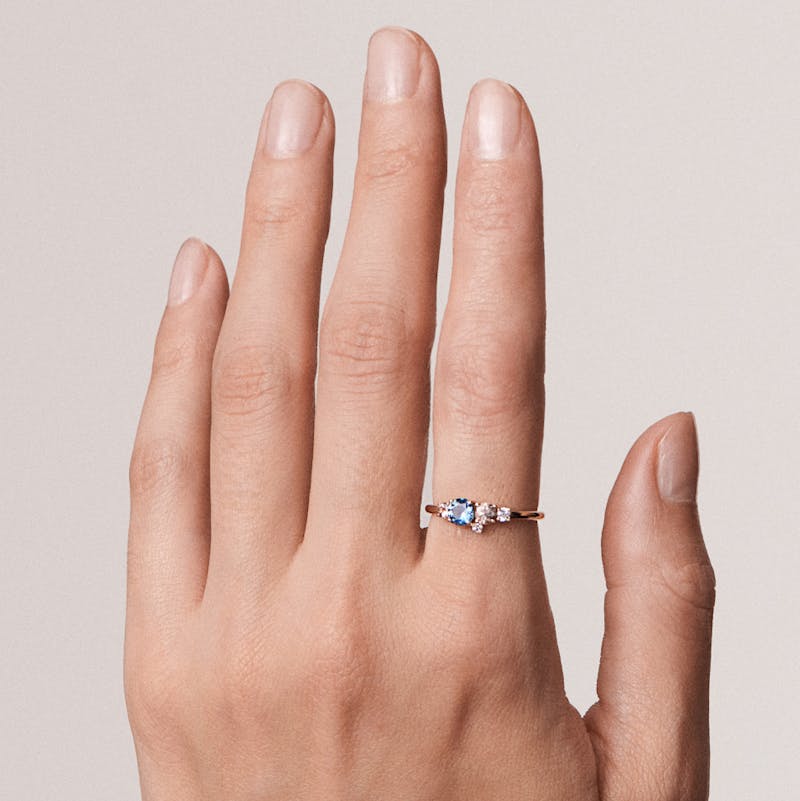Settings

Like style, the setting of the stone(s) in your engagement ring will play a huge part in the overall look of the ring. What’s more, the setting will also affect how secure the stones are and will impact maintenance needs.
Setting is all about how the gemstones are set – mounted – in a metal band. They are responsible for turning a simple metal band into a treasured, gem-adorned engagement ring.
There are many different types of settings to choose from. Whether for aesthetic considerations or technical needs, your choice of setting is a very important decision you need to make when purchasing an engagement ring.
In this guide, we’ll explain the different types of setting you may encounter and can choose from.
.jpg?ixlib=gatsbyFP&auto=compress%2Cformat&fit=max&rect=0%2C417%2C3840%2C3840&w=800&h=800)
Claw/ Prong
One the most popular setting, the Claw setting is a “classic” setting that shows off the stone. With open sides and choices of claw style, this setting will not only make your stone sparkle but allows for more customisation. You can also choose the number of claws you want, depending on the size of the stone and the style you are going for.
Claws are small metal arms that keep the gemstone in place.
A claw setting is greatly secure, but the claws may occasionally catch in clothing or get bent out of shape. You may also want to get them re-tightened every few years to ensure they don’t lose their grips.
The most famous claw setting is the Tiffany setting, a six-prong solitaire setting that makes the centre stone the star of the show.
To read more about the different style of claws, keep reading to the end of this settings guide.
Cathedral
Prongs and arches of metal support the central stone in a Cathedral setting. It’s traditional with a twist and looks fantastic from all angles.
A Cathedral setting adds height to an engagement ring, elevating the centre stone above the band.
Bead/ Grain
Instead of small metal arms, the Bead setting uses “beads”. Small round pieces of metal are raised to the surface, around and over the stone to keep it in place. The “mini claws” usually sparkle, so it’s a great setting for smaller stones, or on the band of an engagement ring, such as for eternity rings.

Pavé
A type of Grain setting, the Pavé setting uses small prongs to set a number of small stones extremely close together. A Pavé setting doesn’t have a lot of metal surrounding the stones, giving the illusion your engagement ring has been paved with stones.
Scallop
A variation of the French Pavé setting – the outer edges of the metal are cut in a V shape to allow more light in – the Scallop setting has U shaped metal cut-outs. Both the French Pavé and the Scallop settings are used to minimise the amount of metal used in the setting. It’s all about the stones and their sparkle.
Channel
Stones are set in a row between two metal edges. Sitting in a groove, the stones will appear neat and flush against the metal. There is no metal in between the stones but this is a very secure setting option that will keep the focus on the stones. Most commonly used on eternity rings or for smaller stones, this is a great setting for the band of your engagement ring.
Bar
A variation of the Channel setting, the Bar setting includes metal bars in between each stone. While this is not a very popular setting, if it fits with your personal style and your choice of engagement ring style, this could be the setting for you.

Tension
Tension setting uses compression to secure the stone. A highly technical setting, the metal has to be alloyed to increase its hardness and the pressure it exerts on the stone to keep it in place. This setting will display the side of the gemstone and is only suitable for stones high on the Mohs scale, as they need to withstand the opposing directions of pressure from the metal.
Giving the illusion that the stone is floating, a Tension setting looks beautiful but it is not the most practical setting to use for an engagement ring that will be worn everyday. Because metal may lose its memory, the stone may fall out, something some jewellers are counteracting by adding support bars to the setting.
Bezel/ Rubover
The stone is surrounded by metal in a Bezel setting. This secures the stone in place and gives the engagement ring a slightly retro look. Accentuating the stone, the Bezel setting is great if you don’t want any prongs or claws distracting from your perfect gemstone, as it will be framed by metal on all sides.
Unfortunately, one of the downside of the Bezel setting is it doesn’t allow much light in the stone and may make some stones appear a bit duller than with other settings.
Flush/ Gypsy/ Burnish
Another setting, another technique. The Flush setting is achieved by drilling a hole in the metal and the stone is then hammered in. This is a greatly secured setting and minimises potential damage to the stone as it will be at or below the level of the metal it’s set in.
The Flush setting is great if you need an engagement ring that won’t catch or protrude as the stone is sunk into the metal.
Illusion
Used to enhance the size of a stone, the Illusion setting uses claws within a faceted metal disc that catches the light. It will give the illusion the stone is bigger than it is by confusing the eye who can’t detect where the stone ends and the metal begins.
This works best with stones and metals of similar colours, think diamonds and white gold, or yellow sapphire and yellow gold.
Cast-in-place
This setting technique sees the stone directly embedded into the wax and then encased in metal. This method is often unpredictable but produces unique, one-off natural looking pieces.
It’s worth noting that the only natural gemstones you can set this way are diamonds, sapphires and rubies.
Not all stones can withstand the heat of the cast-in-place technique, and there is a certain amount of luck involved in the process.
.jpg?ixlib=gatsbyFP&auto=compress%2Cformat&fit=max&rect=0%2C256%2C1536%2C1536&w=800&h=800)
Types of Claws/ Prongs
You will find most stones are set with either four or six claws. The six-claw setting is called the Tiffany and is a classic setting. But you are not limited and may want more claws if you have a bigger stone.
While a claw setting may be classic, it has its own variations. There are different types of claws – or prongs – you can choose from to truly make your engagement ring unique.
Ball
Appearing as little round balls around the stone, the Ball Claws give a modern look to the traditional claw setting.
Talon
Shaped like an eagle’s talon, the Talon Claws are rounded towards the centre of the stone.
Box
Used for specific shapes, the Box Claws protect vulnerable parts of a stone, such as the tip and corners in a princess cut or pear shape stone.


